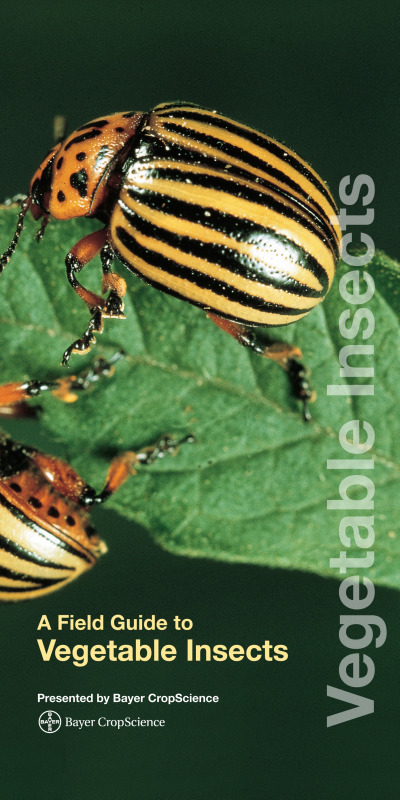
Features
Crop Protection
Inputs
Bayer offers free guide for field veg insects
March 11, 2010 By Dave Harrison
March 11, 2010 – Vegetable
growers across Canada now have a valuable tool to help correctly
identify 39 of
the most common insects affecting the productivity of vegetable field
crops.
 March 11, 2010 – Vegetable
March 11, 2010 – Vegetable
growers across Canada now have a valuable tool to help correctly identify 39 of
the most common insects affecting the productivity of vegetable field crops. A
Field Guide to Vegetable Insects – a new publication produced by
Bayer CropScience – is the first of its kind and includes full-colour photos of
39 insect pests, as well as keys for identification, crops affected and management
notes.
The guide can be ordered at no charge at: BayerCropScience.ca/VegInsectGuide
or by calling 888-283-6847.
“Accurate identification of insect pests can be a difficult task – but
one that’s critical for making pest management decisions,” says David Kikkert,
portfolio manager, horticulture, for Bayer CropScience. “Growers now have a
dedicated resource to help them correctly identify vegetable pests, and make
sound crop protection decisions.”
According to a 2007 report by John R. Meyer, Department of Entomology at
North Carolina State University: “The economic impact of insects is measured
not only by the market value of products they destroy and the cost of damage
they inflict but also by the money and resources expended on prevention and
control of pest outbreaks. Although dollar values for these losses are nearly
impossible to calculate, economists generally agree that insects consume or
destroy around 10 per cent of gross national product in industrialized nations.”
Content and photos for the new guide was provided by the Ontario Ministry
of Agriculture, Food and Rural Affairs, Alberta Agriculture and Rural
Development, B.C. Ministry of Agriculture and Lands, Government of Manitoba,
Government of Prince Edward Island, The Ohio State University, Colorado State
University and the University of Minnesota.
Print this page